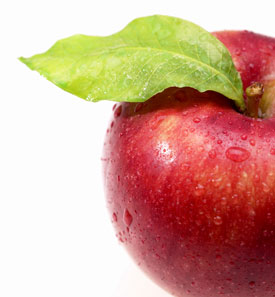 We don’t specifically recommend the “Paleo Diet” to the people that we see at the clinic, but we sure don’t eat like our hunter-gatherer ancestors; and from this, we can learn a lot about how we should be eating today.
We don’t specifically recommend the “Paleo Diet” to the people that we see at the clinic, but we sure don’t eat like our hunter-gatherer ancestors; and from this, we can learn a lot about how we should be eating today.
We can only imagine what would happen if one of them tried to tackle a Big Mac, or a pizza, or even a chocolate bar. They might be wowed by a new taste sensation, but I’m not sure their stomachs would be impressed.
The truth is, the typical North American diet is vastly different now versus back then. In fact, about 70 per cent of our diet is made up of all those things we’re often warned against by nutrition experts – dairy products, trans fats, refined sugars, and cereal grains like wheat.
Our primitive ancestors ate little if any of this. They didn’t grow crops, milk domesticated animals, or turn to cola or juice as their water source.
So what did they eat?
(Much of the following is drawn from a great article in the March/April 2012 edition of the American Journal of Human Biology, by Staffan Lindeberg, “Paleolithic diets as a model for prevention and treatment of western disease.”)
For fruits and veggies, it was ripe fruits and berries, shoots, flowers, buds and young leaves, roots and bulbs. For protein and essential fats, it was bone marrow, organ meats, fish, shellfish, insects, larvae, eggs, nuts and non-grass seeds.
By studying their remains, scientists have found that our ancestors had favorable blood pressure and cholesterol, and good cardiovascular health, even though their diet was often high in meat consumption. Their diets were high in fibre and essential micronutrients that are often lost when food is processed and packaged.
What we find interesting to note is that eating this combination of natural whole foods is more than sufficient to provide a complete and balanced diet – science has proven it. There is nothing your body needs that can’t be obtained with a varied diet of meat, fish, shellfish, fresh fruit and vegetables, nuts, seeds, and eggs.
Why is this better?
So there’s no need to eat cereal grains that contain troublesome gluten or may be genetically modified. Nor is cow’s or goat’s milk in any way an essential part of our diet. Want to make sure you and your kids are getting their calcium for healthy bones? Then just eat your leafy greens, and lay off the grains and beans, because these can inhibit your body’s absorption of calcium.
In fact, cow milk consumption, much more than meat consumption, contributes to cardiovascular mortality. Casein, the dominant milk protein, promotes atheroscolerosis – hardening of the arteries.
We could go on, but the bottom line is this – the kinds of foods you eat is much more important to a healthy lifestyle than counting calories.
The bottom line
In a head-to-head comparison, a modern Paleolithic diet (insects and larvae not required) leads to:
- Reduced waist lines
- Improved blood sugar and glucose tolerance
- Reduced blood sugar
- Healthy levels of blood lipids (fatty acids and cholesterol)
- Improved satiety (you feel full so you eat less)
It’s something to consider next time you’re in the supermarket. We’re not advocating drastic changes to your diet and household grocery list, but little changes over time can add up to a big difference.
For those of us who grew up in a typical Canadian household where milk, bread, sugary treats, and salty snacks were the norm, it’s admittedly hard to escape years of programmed behaviour. But like anything else in life, if it matters enough, you can find a way.
Did you find this information useful?
I hope you did. Please share it with your friends and family. You can also follow Hazeldean Family Chiropractic on Facebook, Twitter, and YouTube, where we regularly post on other health-related topics. Our website also has great information about Chiropractic care and other health topics.

Oct 24, 2015 at 1:07 AM
Yes, L found it very interesting and it really is worth considering when you are shopping, especially. They also must have lived a very active life, just trying to survive all the hardships in their lives and their enemies, both other humans and animals as well. Many thanks for sending that in along.
Oct 26, 2015 at 5:14 PM
Thanks Anne, glad you enjoyed it!
Oct 25, 2015 at 6:34 AM
Love getting this valuable info- thanks team at hazledean!!
Oct 26, 2015 at 5:15 PM
Glad you are enjoying the content! Lots more where that one came from. If you use Facebook, you can like our page there too. Kelly can show you how :-)